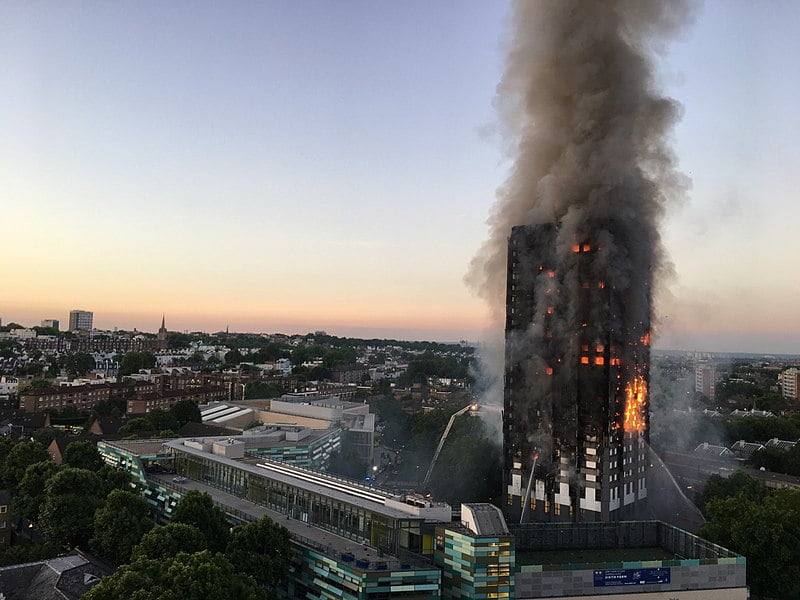
Inquiry confirms that Grenfell fire started in fridge-freezer and catastrophically spread through PE, PIR and phenol cladding. The full report of Phase 1 of the Grenfell Tower Inquiry (856 pages) analyses the causes of the fire and of its catastrophic spread and the events of the night of the fire. Phase 2 (see above) is assessing the decisions which led to “the installation of a highly combustible cladding system” which caused the fire to spread rapidly over the whole high-rise building, breaching the construction fire compartmentalisation and resulting in 72 fire deaths.
The phase 1 report confirms that the fire started in a Whirlpool fridge freezer, in the kitchen of flat 16, with no evidence of any external electrical surge or fault being responsible for this and without it being possible to identify the specific cause of the fire within the appliance. It is underlined that fires can be expected to start in domestic electrical appliances.
The owner of flat 16 was woken by a smoke alarm, rapidly called the fire brigade and alerted the neighbours. The fire brigade arrived after 5 minutes. The inquiry report confirms that the alarm was correctly raised and that the fire services intervened rapidly. The catastrophe resulted from the spread of the fire through the cladding materials, installed during a major refurbishment 2012-2016, which rapidly breached all compartmentalisation. The fire brigade’s “stay put” policy (telling residents to stay in their flats and close doors) was initially appropriate in a compartmentalised building, but not after compartmentalisation had been breached.
The heat from the fire in the fridge-freezer, possibly spreading to nearby materials, caused failure of the flat window, probably due to deformation of the uPVC frame of the windows (unplasticized-PVC windows installed in the refurbishment) and of the frame and surrounds of the Nuaire ventilation unit in the window (PC-ABS). Flames through the window space then ignited the exposed edge of the polyethylene core of the Arconic ACM rainscreen.
The main mechanism of the flame spread over the whole of the exterior of the building was melting – dripping of this polyethylene, with also PIR (Celotex) and/or phenol foam (Kingspan) insulation materials and components of the windows contributing to the fire spread. The same failures of windows and ventilation units then allowed the fire to spread from the burning cladding into other flats on other floors, by-passing the building’s fire compartmentalisation. Other failures are also identified in the tower, in particular some fire doors failed to function.
The report considers that, over the lifetime of a block of flats, it is “almost certain that a kitchen fire of this magnitude would happen”, and that the configuration and combustible materials of the (renovation) windows led to a “disproportionately high probability” that wire would then spread to the cladding.
“Grenfell Tower Inquiry Phase 1 report.”, October 2019. Summarised here for context of Inquiry Phase 2 above. https://www.grenfelltowerinquiry.org.uk/
Image: Grenfell tower fire, Natalie Oxford, wiki commons https://twitter.com/nat_vampicca/status/874835244989513729